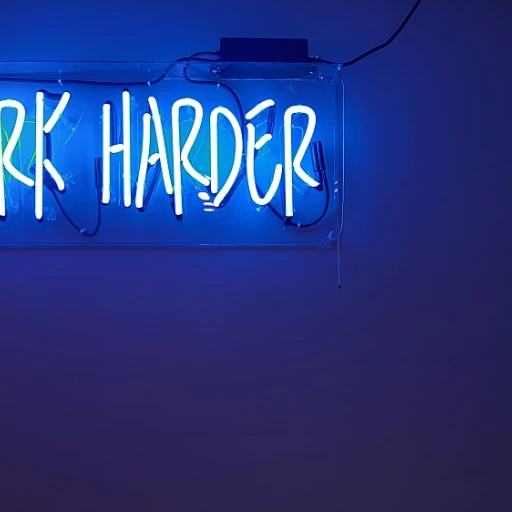
Understanding the Modern Work-Life Balance
The Evolving Landscape of Work Dynamics
In today’s rapidly changing world, the concept of work-life balance has gained prominent attention as employees navigate the blend of professional and personal obligations. The shift towards a more integrated approach combines remote work, hybrid models, and traditional office environments, profoundly influencing how individuals allocate their working hours and home time.
Work patterns have diversified, offering flexibility but also presenting challenges. The introduction of remote work has allowed many employees to manage work time without the confines of a traditional office. This flexibility can lead to increased productivity and more spare time, as reported by numerous surveys, but also blurs the boundaries between work and personal life.
The impact of the COVID pandemic accelerated the adoption of remote work, encouraging businesses to rethink job structures. While working from home removes the need for commuting and allows more family interaction, it can also increase stress due to the continuous demand for availability and the lack of clear division between work and home duties.
As employees find themselves straddling multiple roles, there is a critical need to define boundaries. This involves understanding the number of hours effectively allocated to job tasks versus personal responsibilities. Initiatives such as implementing core hours have emerged as a practical solution, giving employees the flexibility to manage their work-life balance better while maintaining productivity.
Today's workforce comprises diverse roles and responsibilities, where workers need to adapt constantly. The hybrid model, for instance, combines the structure of the office work with the flexibility of working home, providing an equilibrium that suits a wider range of employee needs. However, this integration of home and office spheres also requires robust strategies to ensure both home work and office obligations are met without compromising on mental health and overall well-being.
Challenges of Balancing Home and Workplace Responsibilities
Juggling Dual Commitments
Managing the delicate balance between work commitments and personal responsibilities is a prevalent issue for many employees. The emergence of hybrid and remote work arrangements has allowed workers to spend more time at home, making it easier to attend to family duties. However, this new dynamic also blurs the lines between work and home time, often leading to increased stress and longer working hours.Blurred Boundaries in a Digital World
The COVID-19 pandemic accelerated the shift from traditional office work to remote and hybrid models. Employees working home now deal with overlapping lines between their personal and professional lives, often being on-call beyond the typical office hours. Surveys reveal that people working remotely frequently feel obliged to be available outside of normal work time, thus affecting their health and overall life balance.Different Roles, Different Stresses
The challenges of achieving a sustainable work-life balance vary significantly depending on workers' roles and the adaptability of their respective workplaces. Remote workers may face the pressure of maintaining productivity without the structured environment of a physical office, while those in hybrid roles might struggle with adjusting their commute and family schedules. For full-time employees, managing childcare, home work duties, and professional responsibilities can be particularly stressful.Navigating the Corporate Culture
A supportive work environment is crucial in helping employees achieve a balanced life. Encouraging flexible working hours, recognizing diverse employee needs, and fostering open communication aid in reducing stress and promoting employee well-being. To gain a deeper understanding of the influence of corporate culture on work-life balance, explore the insights provided here: How Company Culture Influences Work-Life Balance. This resource emphasizes the importance of creating an adaptable and inclusive workplace to enhance employees' health and work-life equilibrium.Strategies for Effective Time Management
Mastering the Art of Prioritizing
Finding the right work environment can significantly impact an individual's ability to navigate work-life balance effectively. As people increasingly adapt to hybrid and remote work models, managing time between home and work becomes integral to maintaining productivity and well-being.
First, understanding your priorities is crucial. Whether you're a full-time employee or working from home, identifying the tasks that demand your immediate attention is essential. Consider using tools like task management apps or daily planners to allocate your working hours effectively.
Allocating Time Wisely
It's important to set realistic working hours, whether in an office or remotely, to ensure that you maximize output while avoiding burnout. Surveys show that employees work better when they have clear boundaries between their work time and their home life, minimizing stress and improving mental health.
Flexible schedules can be a boon for many workers. When possible, arrange your working office hours around family commitments or home responsibilities, ensuring you get enough home time. This practice not only aids individual well-being but also boosts overall job satisfaction.
Utilizing Spare Time
Maximize your spare time by recharging and planning for upcoming tasks. While some employees thrive in a bustling office environment, others may find solace and increased productivity in a quiet home office. The COVID pandemic highlighted the importance of remote options, proving beneficial for work-life balance.
However, it's important to monitor remote work habits to ensure productive hours are not overshadowed by extended periods of home work. With the right strategies, embracing a hybrid work week can result in a healthier balance between work and personal commitments.
The Role of Technology in Work-Life Balance
The Influence of Modern Devices and Connectivity
In our swiftly evolving digital age, technology has seamlessly intertwined itself with our daily routines, offering both challenges and opportunities in the pursuit of work-life balance. Modern devices and constant connectivity play a crucial role in shaping how we manage time and responsibilities between the workplace and home.
With the rise in remote work opportunities and the flexibility of hybrid models, employees often find themselves navigating the fine line between working home and office work hours. A survey conducted during the covid pandemic revealed that many workers appreciated the ability to work remotely, finding that it offered more home time and a chance to dedicate moments to family and personal health.
Maintaining Boundaries with Technology
However, technological advancements also come with challenges. The availability to connect at any time can blur the lines between professional and personal life, leading to longer working hours and increased stress. Employees need to establish clear boundaries. Setting designated work time within the home office can help prevent overlap into personal or family activities, ensuring that life balance is maintained.
Many people have turned to digital solutions to manage this balance more effectively. Tools that monitor working hours, allocate home time, and ensure that one sticks to a reasonable schedule have shown to be effective in reducing burnout and maintaining productivity.
Enhancing Communication and Collaboration
On a positive note, technology facilitates improved communication and collaboration among workers from different locales. Whether employees work remotely or in hybrid settings, tools for video conferencing and project management ensure that teams remain connected, despite physical distance. This advancement is particularly beneficial for global organizations where maintaining an active office work environment is critical.
The transformation in workplace dynamics also reflects the need for organizations to rethink how they utilize technology. Employers who prioritize the well-being of their employees by fostering a supportive work environment can better assist in reducing stress and improving overall life balance for all involved.
Mental Health and Well-being in Work-Life Balance
Mental Health in Working Environments
The balance between work and home is critical not only for job performance but also for maintaining mental health and well-being. The emergence of remote and hybrid work models since the covid pandemic has brought both benefits and challenges in this regard.
For many employees, working from a home office can feel like the perfect solution to long commuting hours. However, while office work and remote work systems offer flexibility, they risk blurring the lines between professional responsibilities and home time, which can become a source of stress.
Dangers of Stress in Work-Life Balance
Continuous screen exposure, irregular working hours, and the expectation of being available beyond normal hours can contribute to mental fatigue. A survey indicates that people working remotely may experience loneliness and isolation, reducing job satisfaction.
It's essential for both employees and employers to acknowledge the psychological implications of home work arrangements. Strategies such as clearly defined work time, taking breaks, and carving out spare time for family and personal interests are vital for reducing stress.
Remote Work and Health Considerations
A supportive work environment allows workers to prioritize their mental health. Including mental health resources and encouraging regular check-ins can create a healthier balance for those working home-based full time.
As employees work remotely, it's crucial to implement solutions that promote a strong life balance. Encouraging healthy habits and accessing psychological support should be part of any organizational strategy, enhancing overall well-being for employees across different workplace settings.
Creating a Supportive Environment at Home and Workplace
Fostering a Harmonious Work Environment
Creating a supportive environment at both home and the workplace is crucial for achieving a sustainable work-life balance. In today's hybrid work models, where employees often split their time between office work and working remotely, the need for a conducive atmosphere is more important than ever. A survey of workers revealed that a positive work environment significantly reduces stress and enhances productivity.
Employers can play a pivotal role in this by implementing flexible working hours and encouraging open communication. This not only helps employees manage their work time more effectively but also allows them to dedicate quality time to their family and personal life. Encouraging employees to take regular breaks and providing mental health resources can further alleviate stress and improve overall well-being.
Building a Supportive Home Environment
At home, it's essential to establish boundaries between work and personal life, especially for those who work remotely. Setting up a dedicated home office space can help create a clear distinction between work time and home time. Families should communicate openly about each member's needs and responsibilities, ensuring that everyone has the support they need to balance their job and home duties.
Incorporating family activities into spare time can strengthen relationships and provide a much-needed break from work-related stress. Whether it's a shared meal or a weekend outing, these moments can enhance life satisfaction and contribute to a healthier work-life balance.
Encouraging a Culture of Balance
Both employers and employees must work together to foster a culture that values balance. This involves recognizing the importance of life outside of work and supporting initiatives that promote employee well-being. By prioritizing a balanced approach, organizations can not only improve workforce performance but also enhance employee satisfaction and retention.












